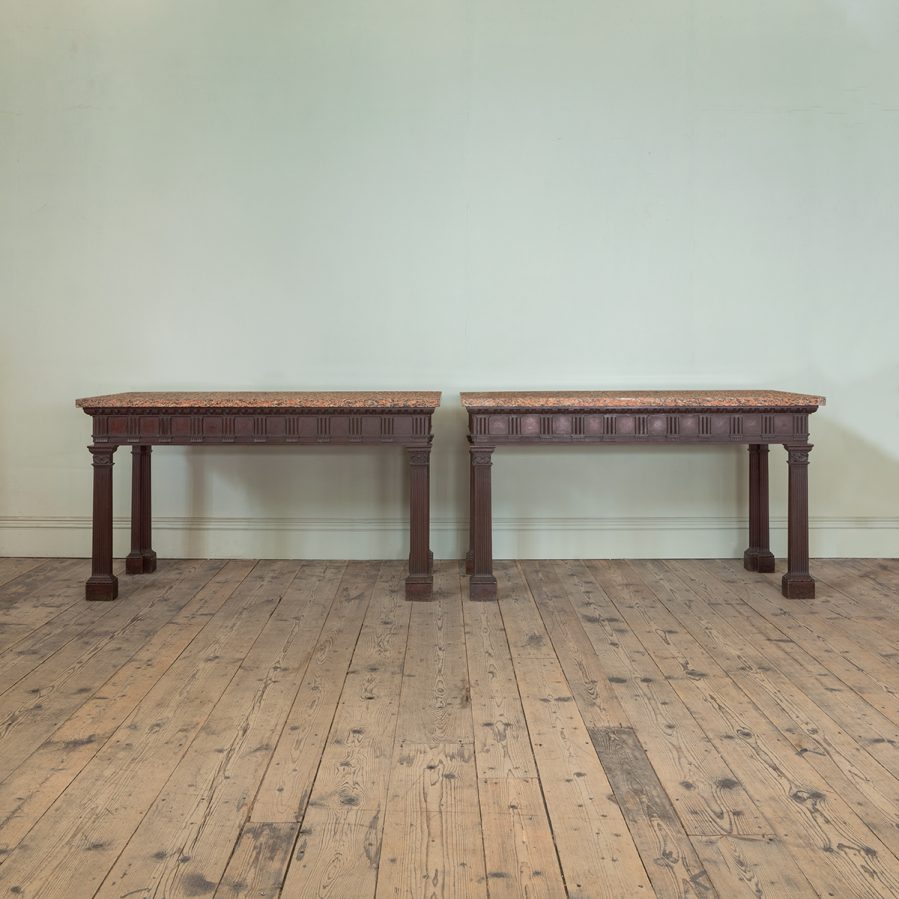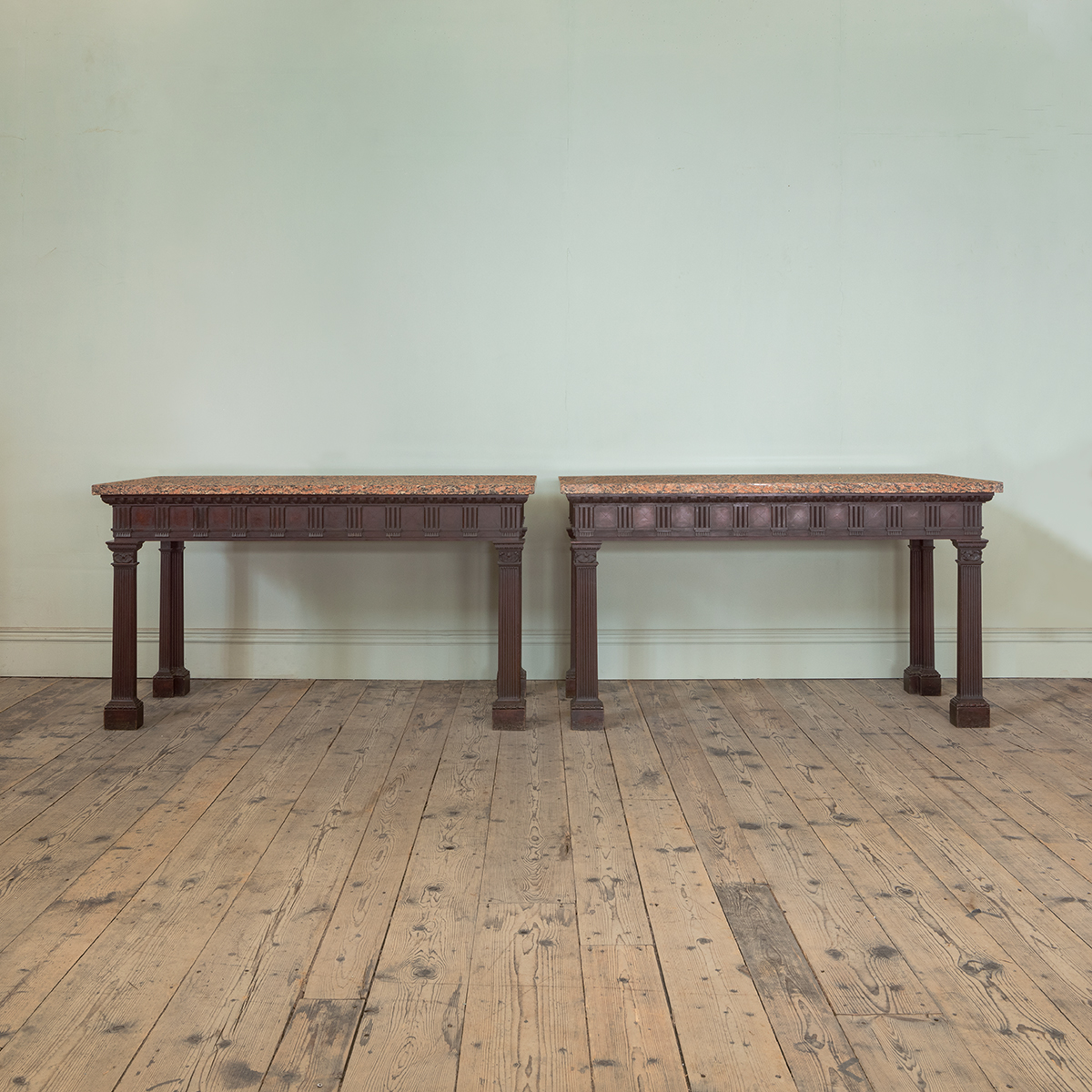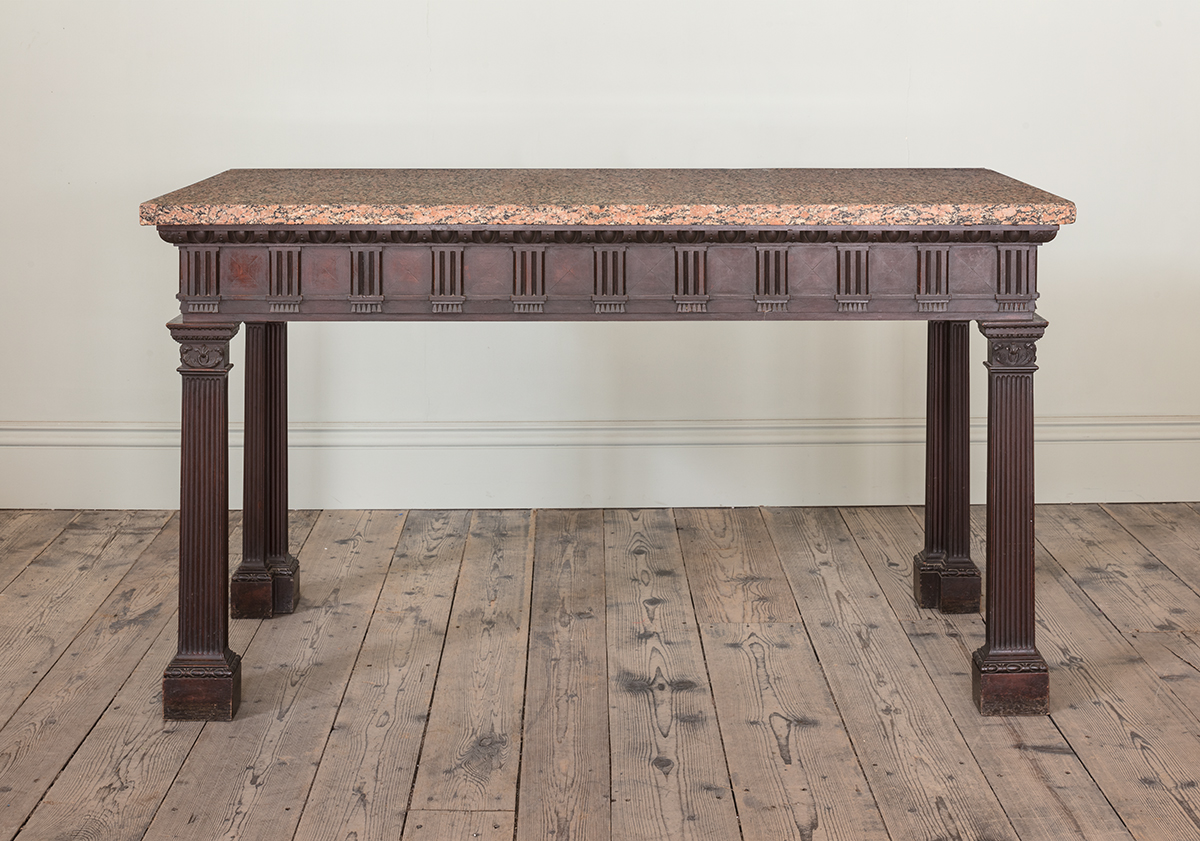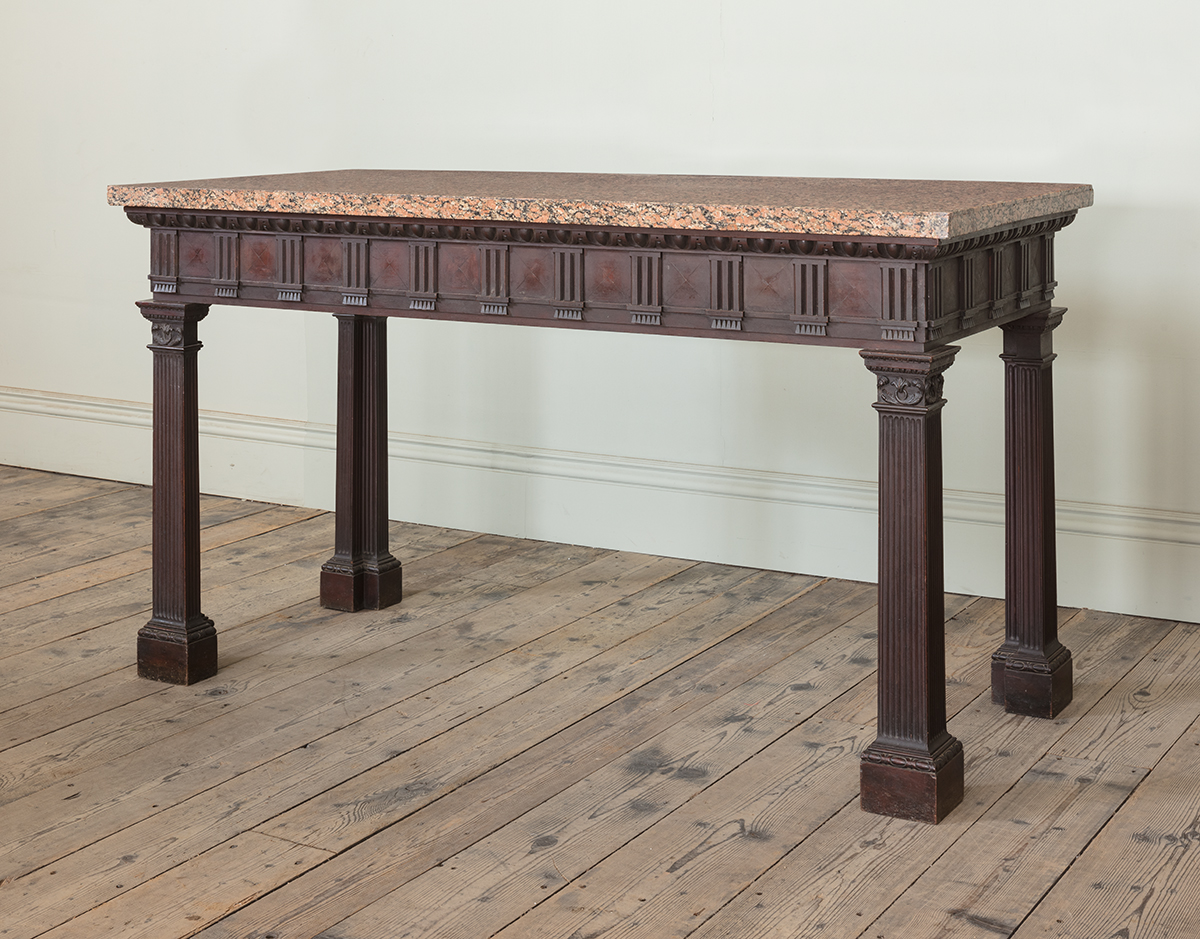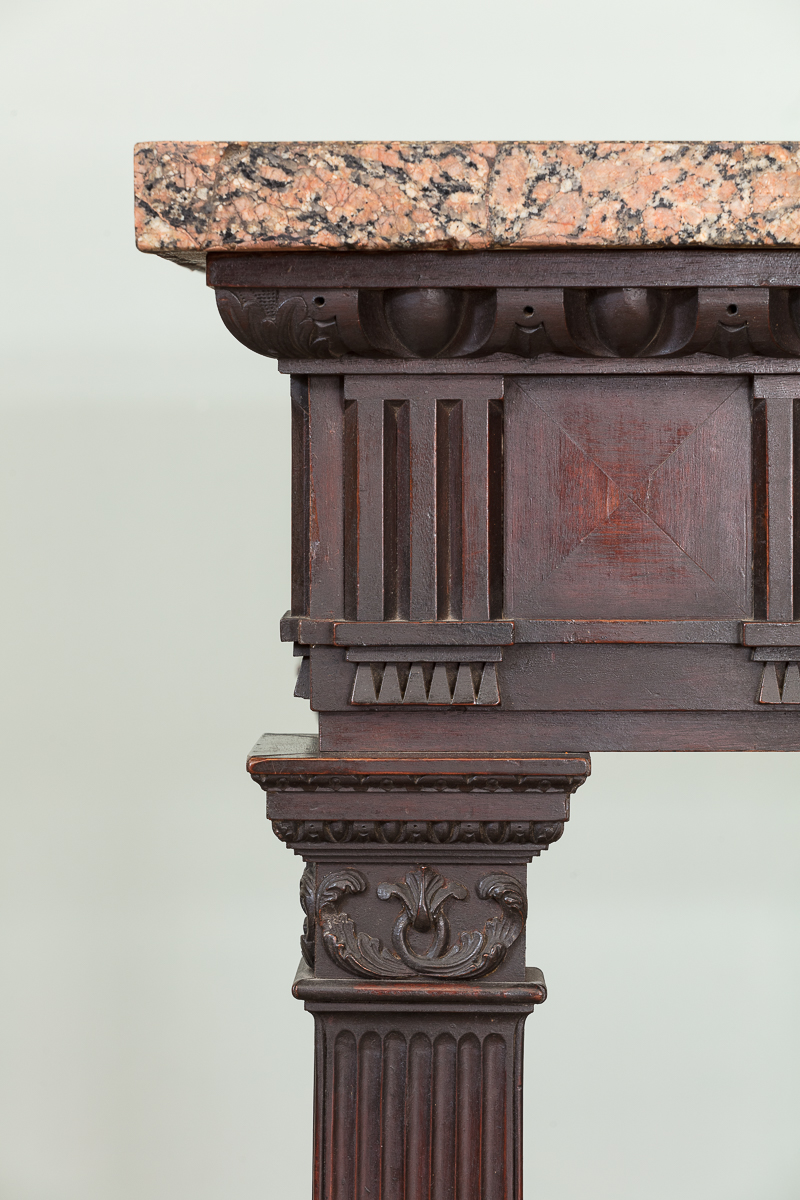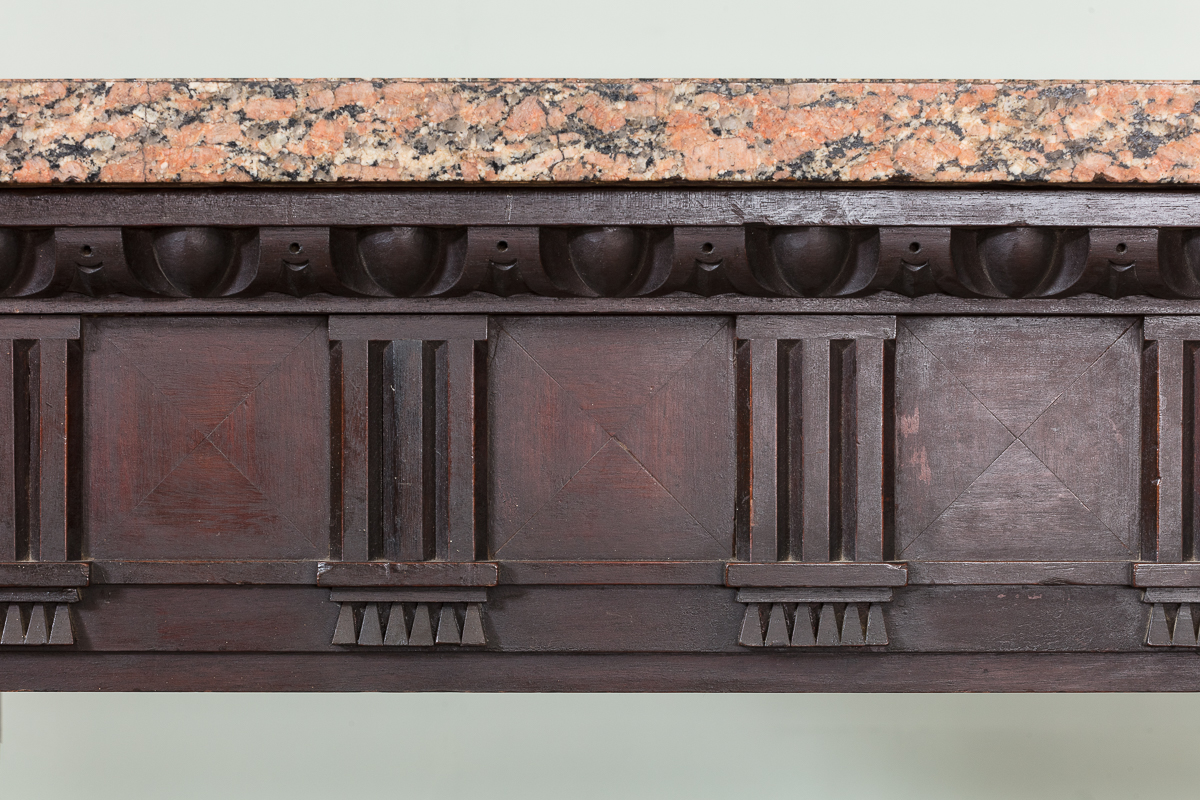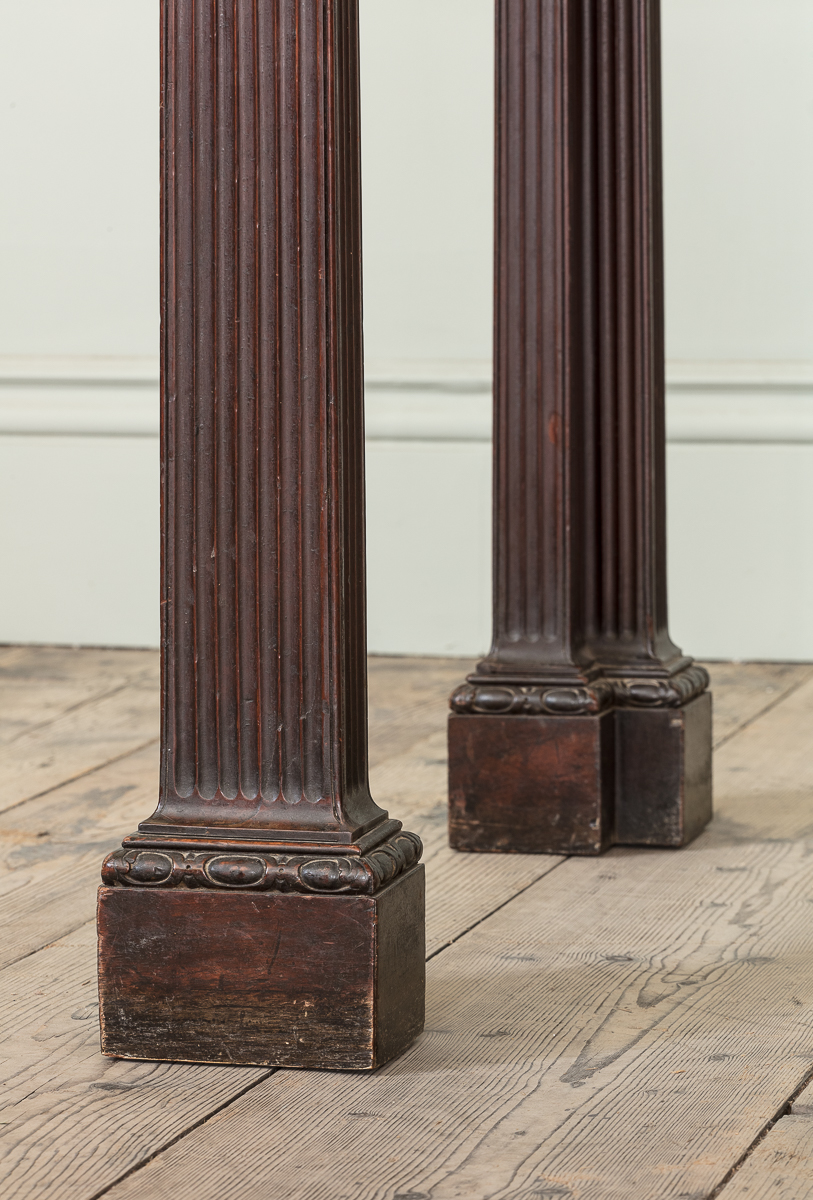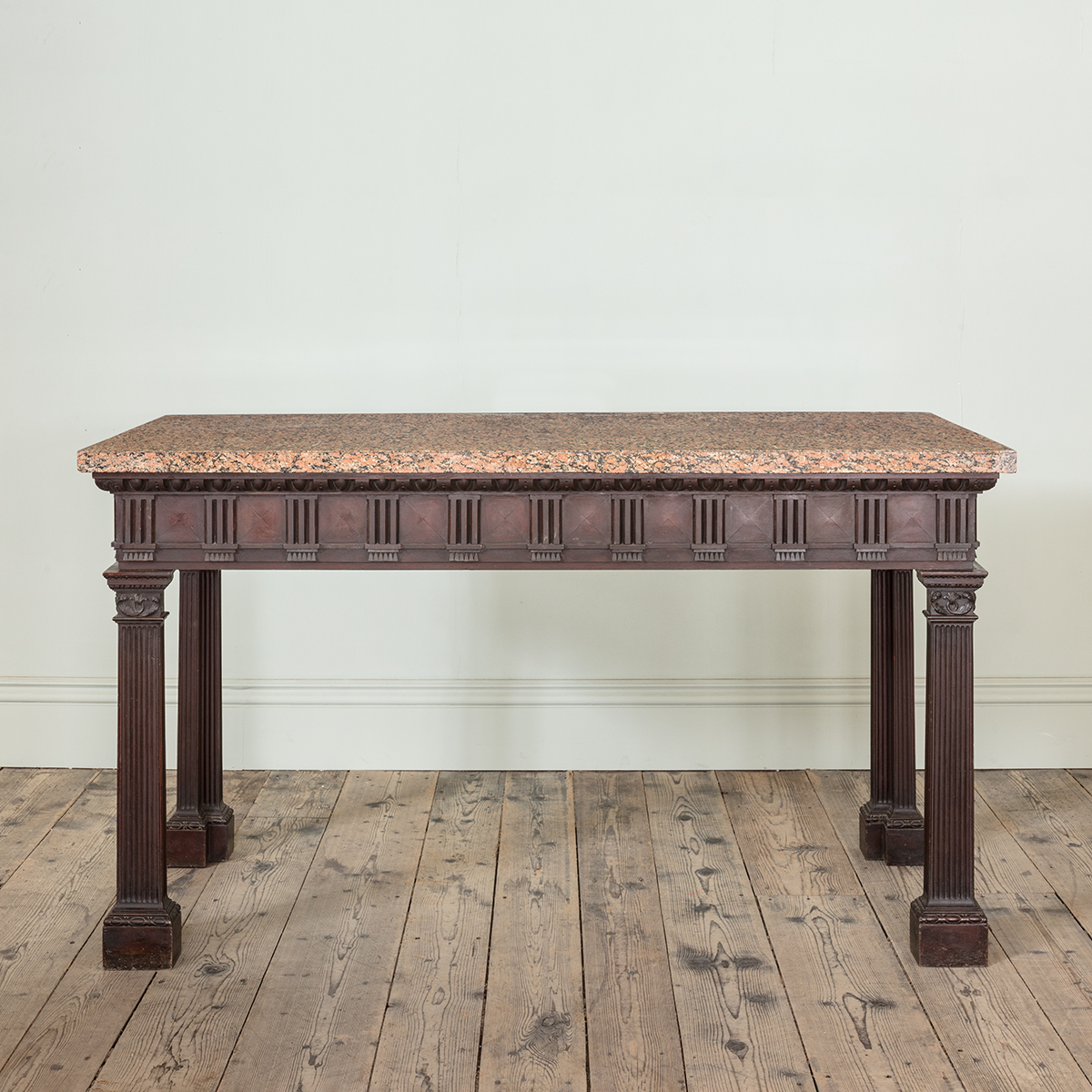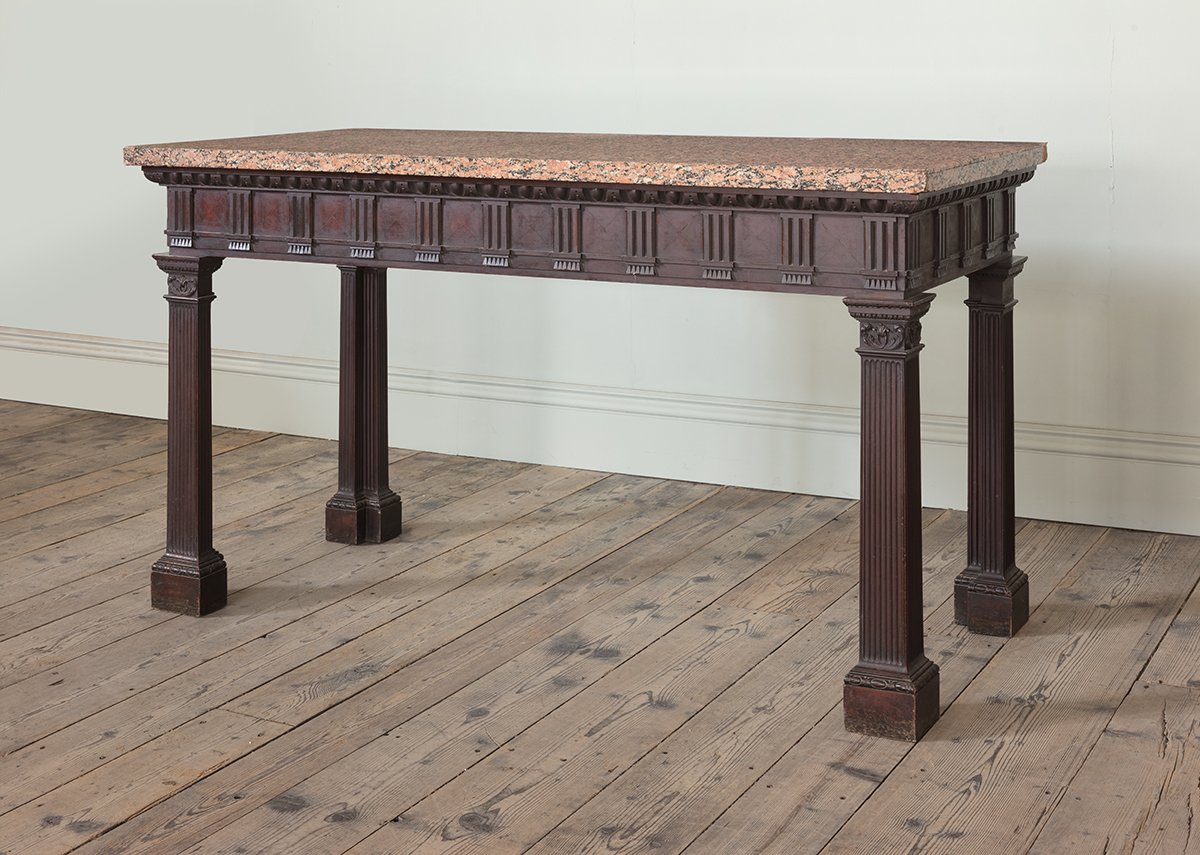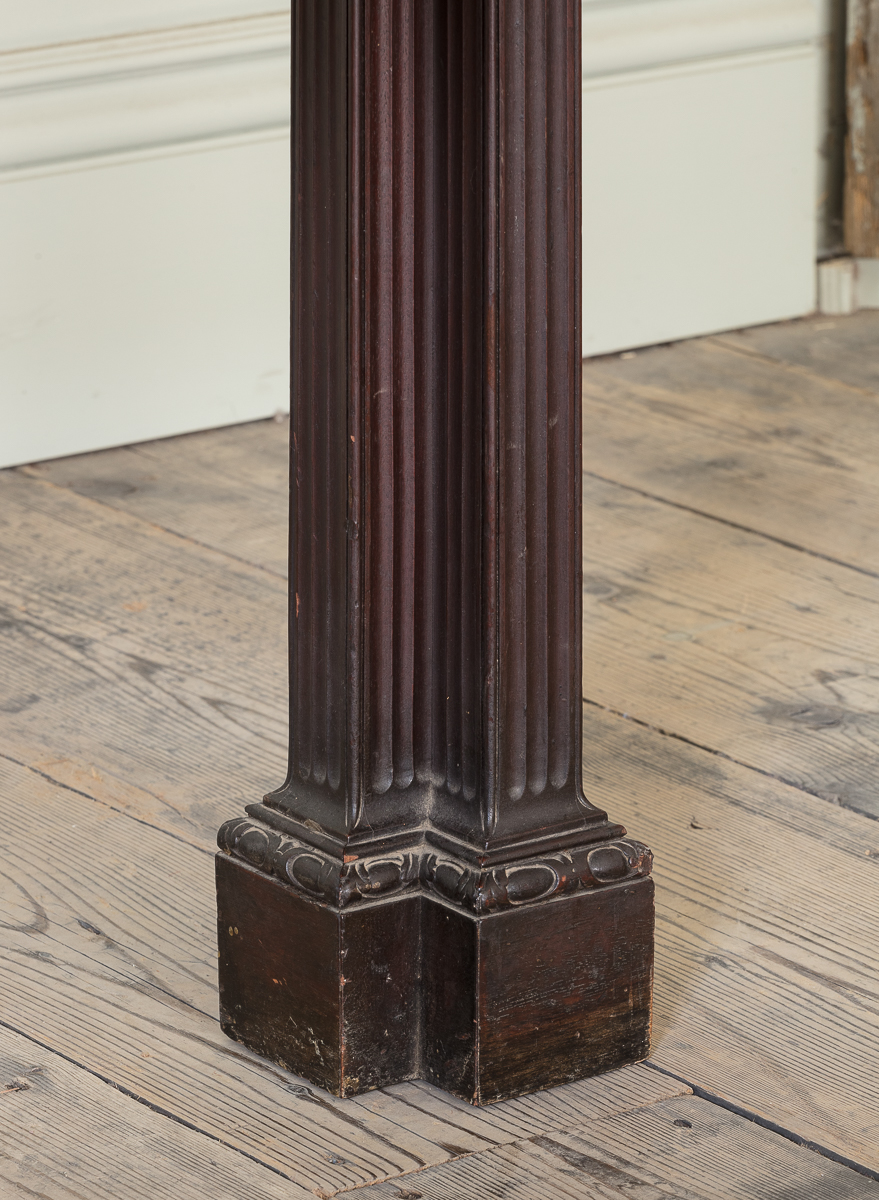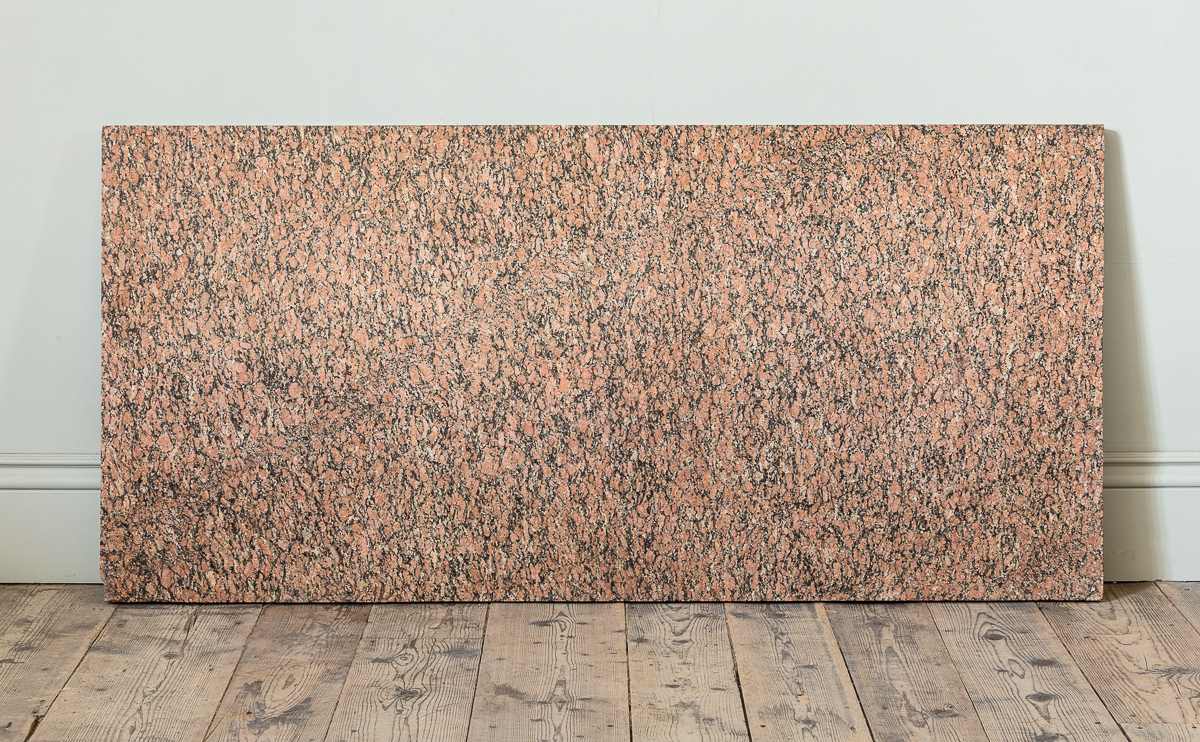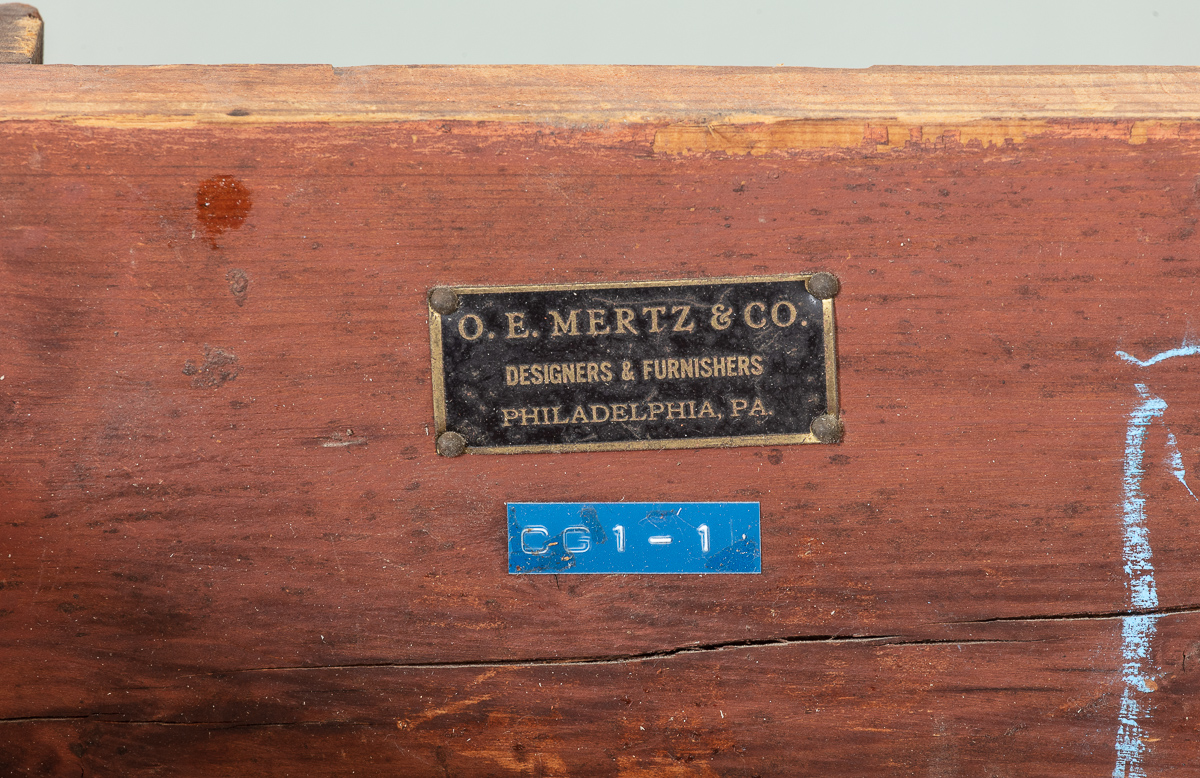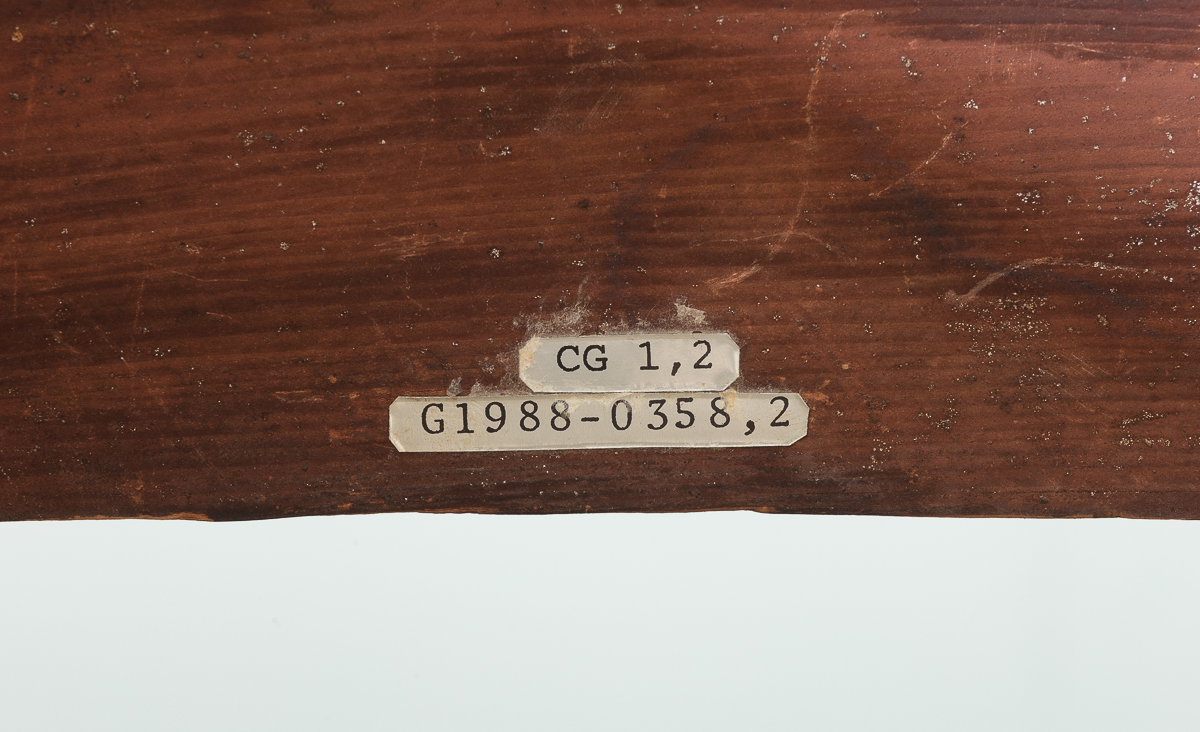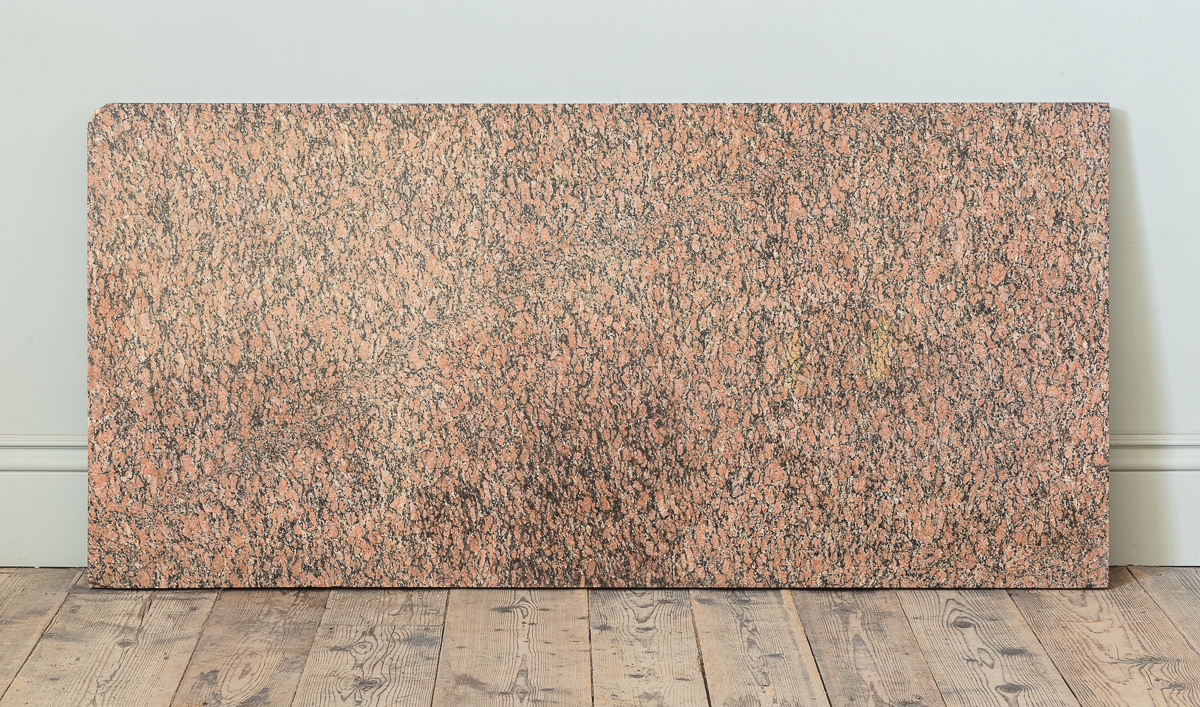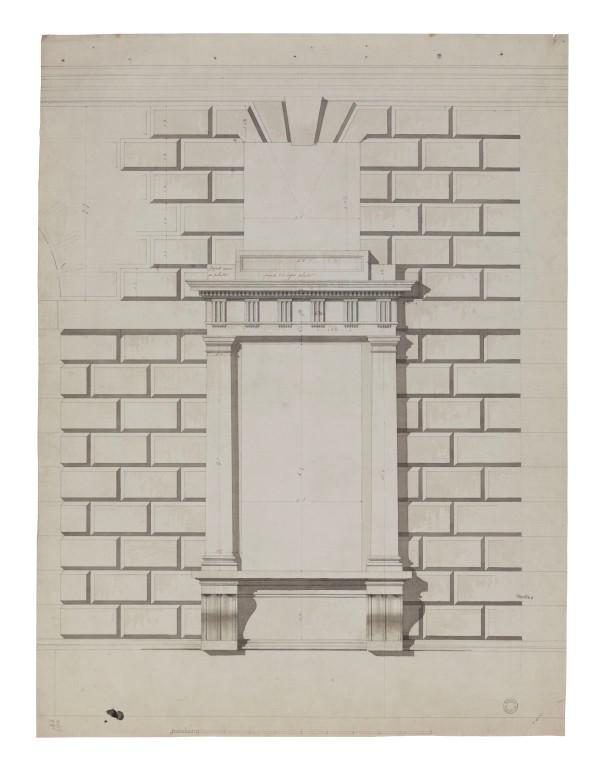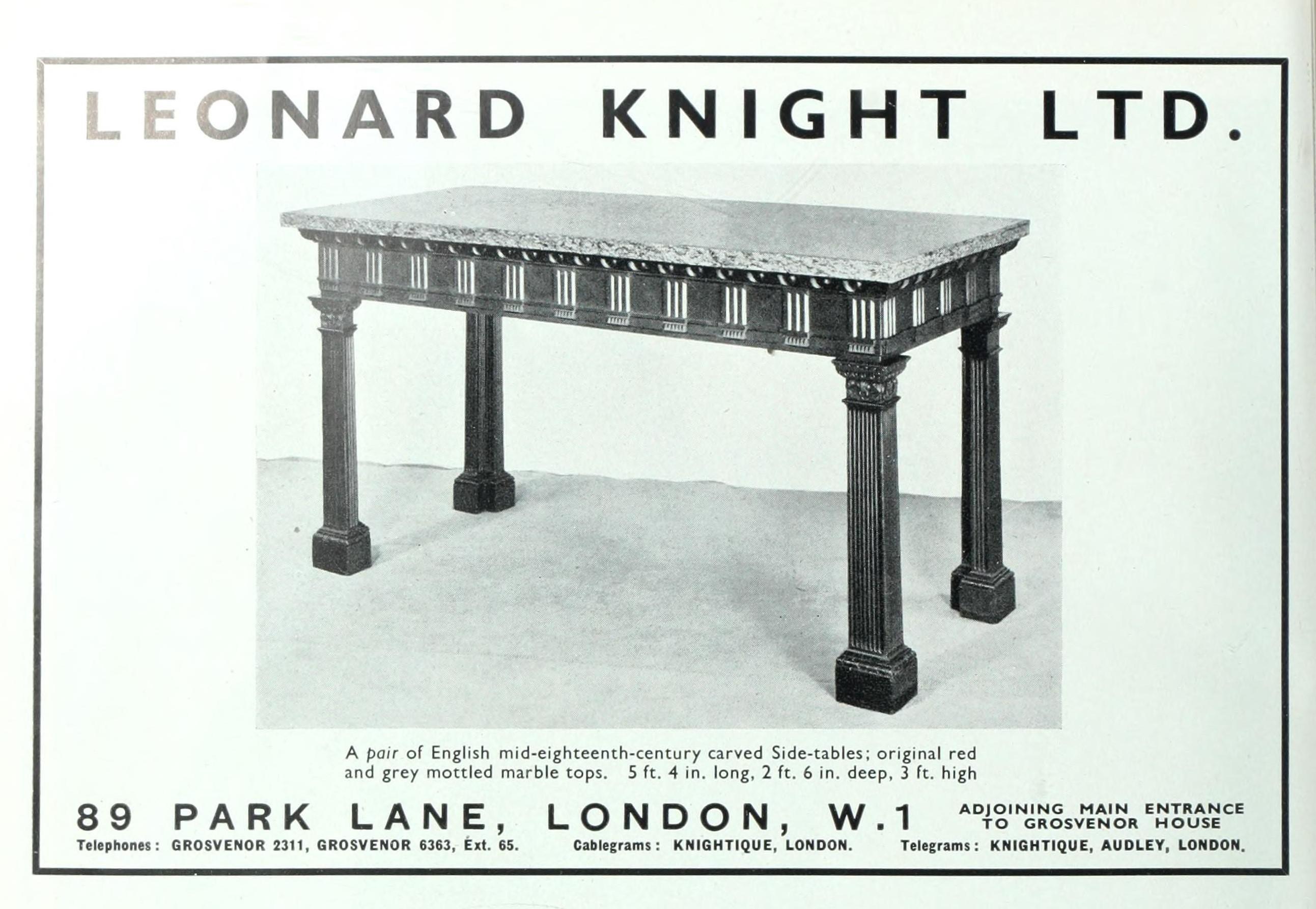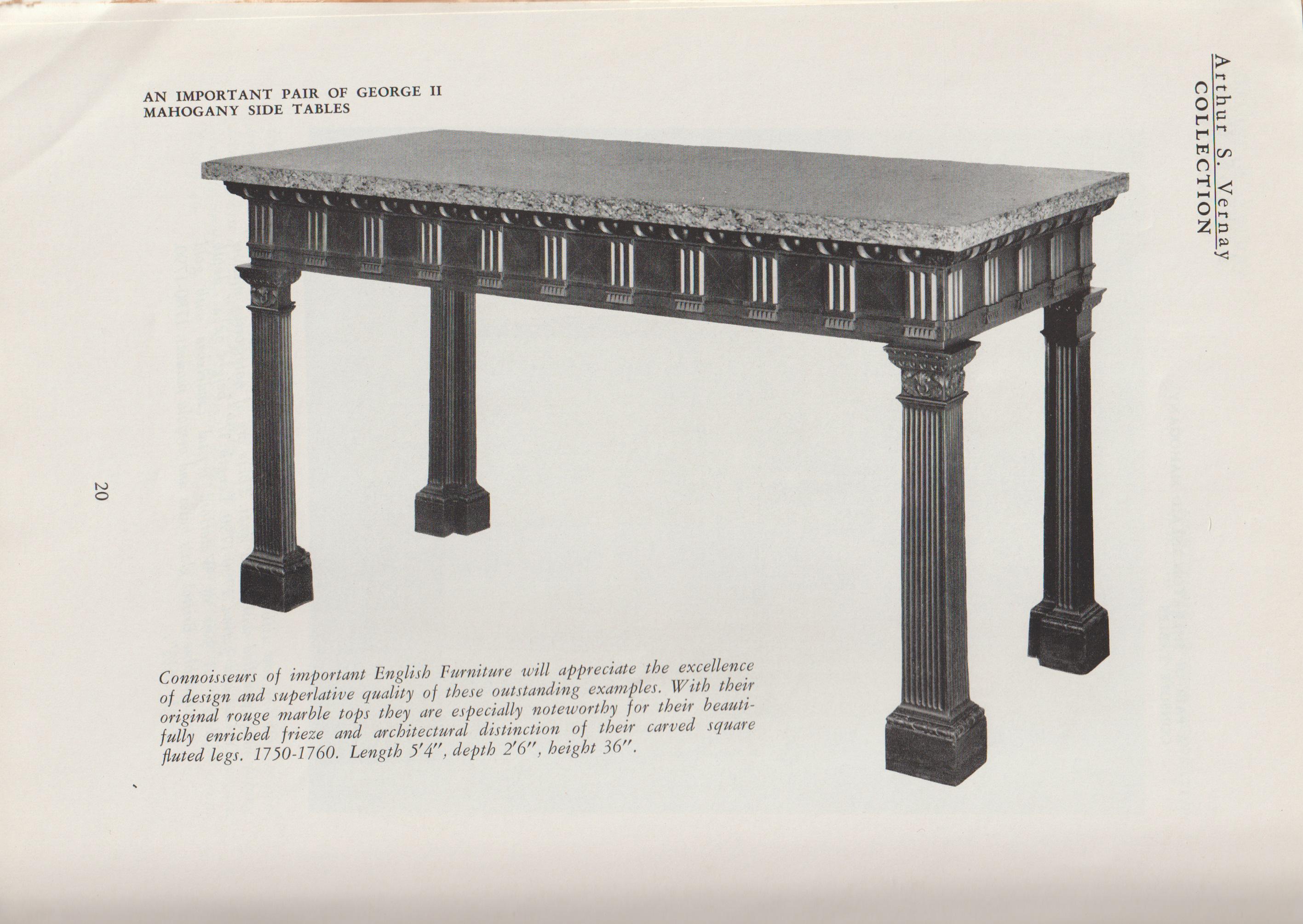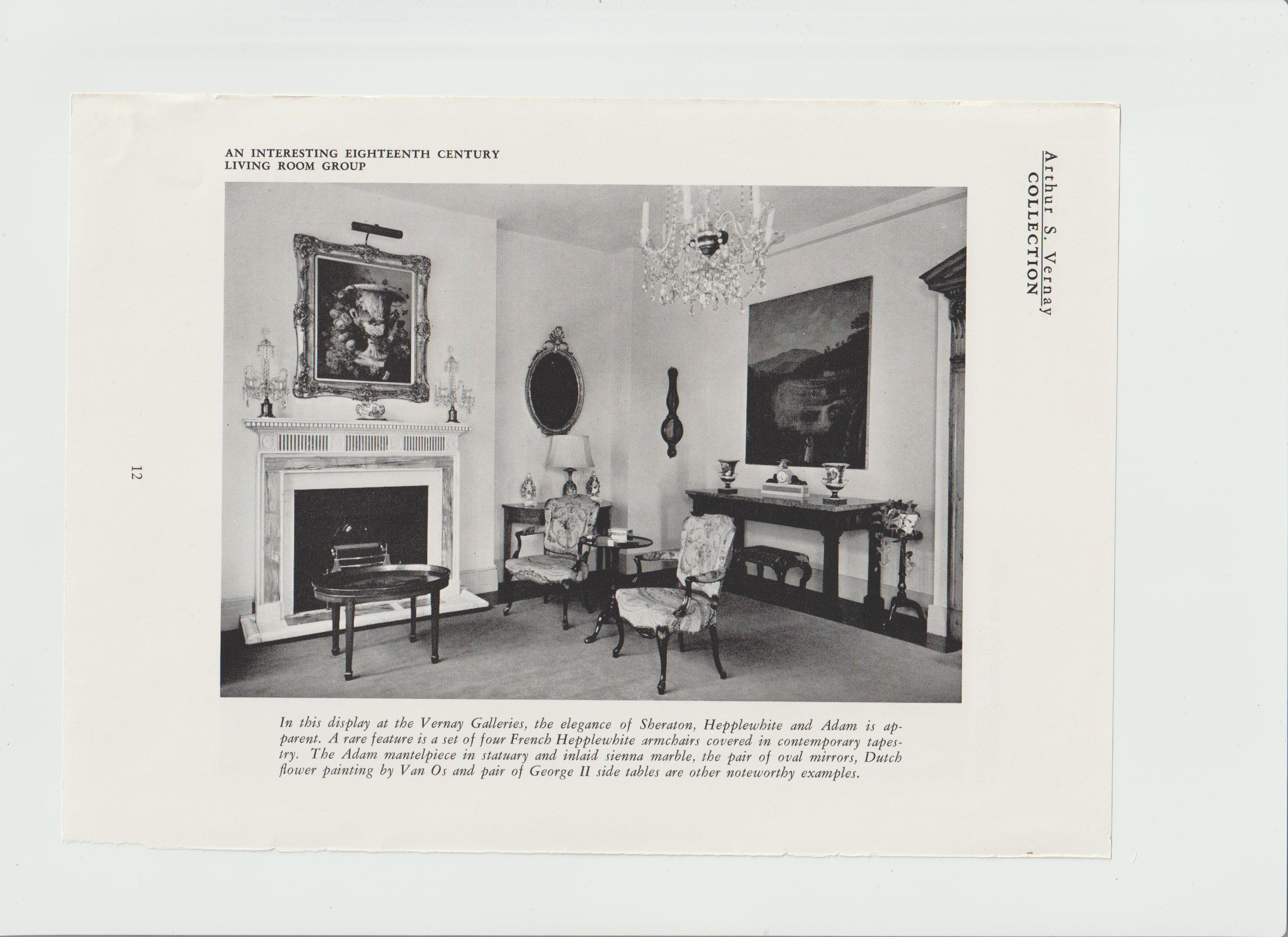A Highly Important and Handsomly Drawn Pair of Late George II Mahogany Side Tables with the Original Egyptian ‘Aswan’ Granite Tops in the Manner of Sir William Chambers
The tables are in untouched country house condition with dry, original surfaces and retaining the highly important granite tops (see below), original to the bases.
English, c.1760. With label affixed ‘A.C. Vernay’ to one of the tables, and one table bearing the label Oe Mertz & Co. / Designers and Furnishers / Philadelphia, PA.
Each bearing an accession number CG1,2/G1988-0358,2. the other with CG1,1/G1988-0358,1.
The fine Doric columns forming the legs on this table were perhaps inspired by such classical masterpieces as the Bath of Diocletian and the Temple of Minerva, both of which were described in Sir William Chambers’ landmark publication A Treatise on Civil Architecture of 1759. Chambers was later the architectural advisor to King George III, and these tables have all the hallmarks of pieces designed by a talented architect for a the home of a connoisseur who would have appreciated and understood the classical orders and been interested in applying them to home decoration rather than merely exterior architectural detail. A drawing now housed at the Soane Museum, draws enormous visual comparisons with the line and form of the table, and illustrates architectural layouts for Chambers’ greatest surviving project – Somerset House. This drawing is a design for a window, described as “Detail of Window of Treasury Remembrancer’s Office, Front Block, facing Quadrangle”, and is included in the imagery here.
The use of Egyptian granite for the tops of the tables is very significant. Just like Egyptian porphyry, granite was used for monumental works of sculpture and architecture in Egypt and, as a result, the materials were highly sought-after by the Romans who re used much of the material after their conquest of Egypt. Subsequently granite of this sort was a valuable commodity to any grand tourist in the 18th Century and it is likely that the tops were made in Italy and the table bases were created to support them when they had been transported to England. These tables were clearly designed by, and for, true connoisseurs of this type of furniture and the original owners would no doubt have been fully aware of the significance of the tops and their links to ancient civilisations.
The Tables illustrated:
Our tables have been illustrated by their past owners in prominent publications. When owned by Leonard Knight, a great London dealer based in Park Lane, the tables were chosen for illustration in Connoisseur magazine in the June 1949 issue. Knight singled out the originality of the fine tops and it is wonderful that they have survived in such good condition and are still on the tables more than 70 years later. It was presumably Leonard Knight who sold the tables to Arthur Vernay inc., and in 1951 as they were then advertised in the firm’s Spring Catalogue for that year. Describing them as “an important pair of George II mahogany side tables”, the Vernay firm’s statement that “connoisseurs of important English furniture will appreciate the excellence of design and superlative quality of these outstanding examples” is as accurate today as when the catalogue was published.
Provenance:
Leonard Knight Ltd, Park Lane, London, advertised in Connoisseur, June 1949
Arthur Vernay Ltd, New York 1951, advertised in their Spring Catalogue for the year
O.E. Mertz & Co, Philadelphia
£POA
Height: 92 cm
Width: 163 cm
Depth: 78 cm


